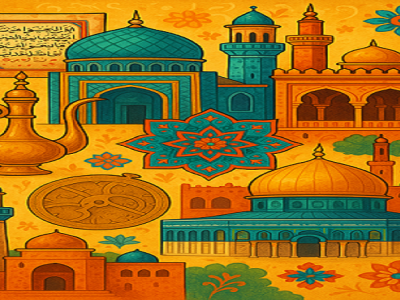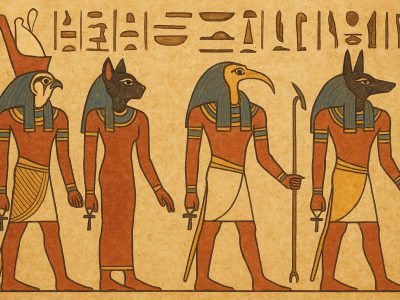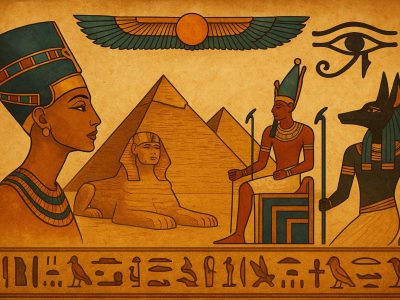This training course offers a comprehensive study of Islamic arts that flourished in Egypt from the advent of Islam up to the era of the Muhammad Ali Dynasty.
Trainees will explore the evolution of artistic styles, decorative motifs, and traditional crafts such as ceramics, woodwork, metalwork, and stained glass. The course also includes analysis of the aesthetic values and symbolic meanings embedded in these arts.
It is an integrated opportunity to understand Islamic art from historical, aesthetic, and cultural perspectives, with a particular focus on its development in Egypt — a country that, for many centuries, served as a major cultural and artistic center in the Islamic world.
The course presents an analytical perspective on the role of religion, politics, local environment, and cultural exchange in shaping Islamic arts in Egypt.
By the end of this course, participants will be able to:
– Gaining knowledge of the historical stages that Islamic arts in Egypt have undergone, and identifying the characteristics of each era.
– Distinguishing artistic and decorative styles in applied arts (woodwork, metalwork, glass, ceramics, etc.).
– Understanding the symbols and visual meanings in Islamic art, such as Arabic calligraphy, vegetal and geometric ornamentation.
– Analyzing renowned Egyptian artistic models through theoretical study.
– Learning about traditional techniques used in the production of Islamic arts.
– Acquiring documentation and artistic analysis skills that qualify the trainee to work in restoration, guiding, or academic research.
– Developing awareness of the importance of preserving Islamic artistic heritage in Egypt and its role in enhancing cultural identity.
Course Features
- Lectures 9
- Quiz 0
- Duration 1680:00:00
- Course Duration 04:10:00
- Skill level All levels
- Language Arabic
- Students 3
- Assessments Yes
Curriculumm
- 10 Sections
- 9 Lessons
- 10 Weeks
- Module 1: The Emergence of Islamic Art (Its Naming – Its Sources)1
- Module 2: Early Islamic Arts (Umayyad – Abbasid)1
- Module 3: Fatimid Arts (Fatimid Pottery)1
- Module 4: Fatimid Arts (Fatimid Wooden)1
- Module 5: Ayyubid Arts (Ayyubid Pottery)1
- Module 6: Ayyubid Arts (Ayyubid Metalwork)1
- Module 7: Mamluk Arts (Mamluk pottery) (Wooden Artifacts)1
- Module 8: Mamluk Metalwork1
- Module 9: Ottoman Arts in Egypt1
- Referencesالمراجع العربية: - حسن الباشا، الفنون الإسلامية والوظائف على الآثار العربية، 3 أجزاء، دار النهضة العربية، القاهرة، 1966م. - ..........الألقاب الإسلامية فى التاريخ والوثائق والآثار، دار النهضة العربية، القاهرة، 1978 م. - ديماند، الفنون الإسلامية، ترجمة أحمد محمد عيسى، دار المعارف، ط2، القاهرة، 1958م . - ربيع خليفة، فنون القاهرة فى العهد العثمانى (1517 –1805م)، القاهرة ، مكتبة نهضة الشرق ، 1985م . - زكي محمد حسن، كنوز الفاطميين، مطبعة دار الكتب المصرية، 1937م. - ............أطلس الفنون الزخرفية و التصاوير الإسلامية ، مطبعة جامعة القاهرة، 1956م . - ..........الفن الإسلامى فى مصر من الفتح العربى إلى نهاية العصر الطولونى ، الهيئة المصرية العامة للكتاب، القاهرة، طـ2، 1994م. - سعاد ماهر، الخزف التركى، مطابع مدكور بالقاهرة، 1960م. - شادية الدسوقي، الخشب في العمائر الدينية في القاهرة العثمانية، مكتبة زهراء الشرق، القاهرة، 2003. - علي الطايش، الفنون الزخرفية الإسلامية المبكرة في العصرين الأموي والعباسي، مكتبة زهراء الشرق، القاهرة، 2013. - محمد عبد العزيز مرزوق، الفن الإسلامى فى العصر الأيوبى، المؤسسة المصرية العامة للتأليف والترجمة والطباعة والنشر، القاهرة ، 1963م . - .............. الفنون الزخرفية الإسلامية فى العصر العثمانى، الهيئة المصرية العامة للكتاب، القاهرة، 1987م - محمود إبراهيم حسين، الزخرفة الإسلامية الأرابيسك، المطبعة التجارية الحديثة، القاهرة، 1987م.0
Target audiences
- Students and graduates of the faculties of Archaeology, Fine Arts, Tourism and Hotels, and Art Education.
- Tourist guides and individuals interested in Islamic culture.
- Professionals working in museums, restoration centers, and heritage organizations.
- Artists and artisans with an interest in Islamic arts.
- Applicants preparing for the Tourist Guiding Examination conducted by the Ministry of Tourism and Antiquities.
- Students from Archaeology and Tourism Guidance departments in the Faculties of Arts and Archaeology.
- Professionals working in public relations departments at major companies.





